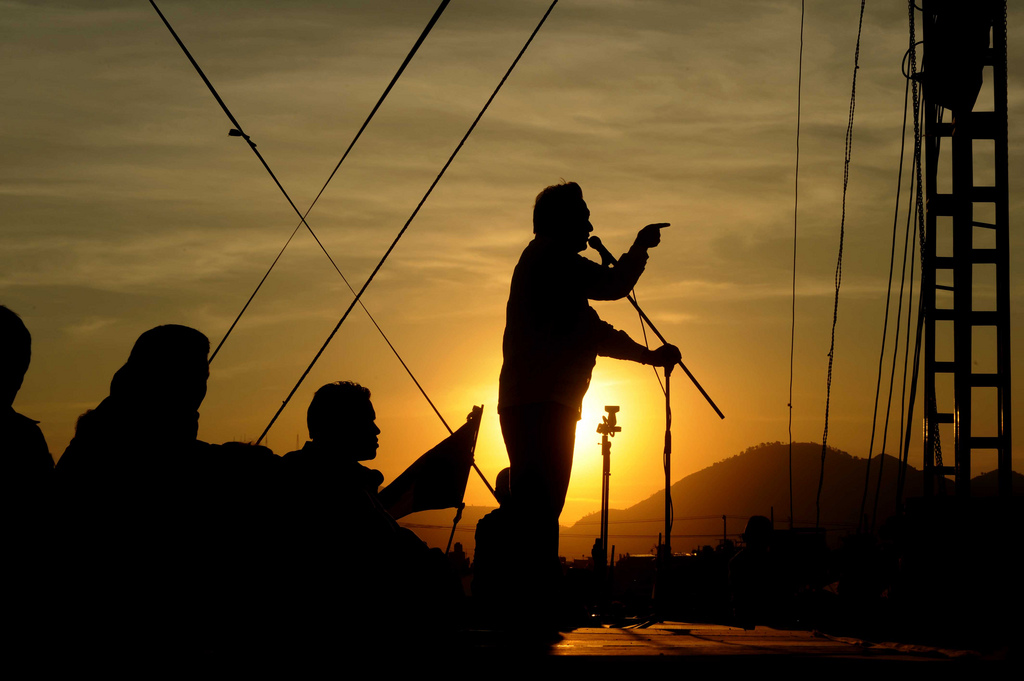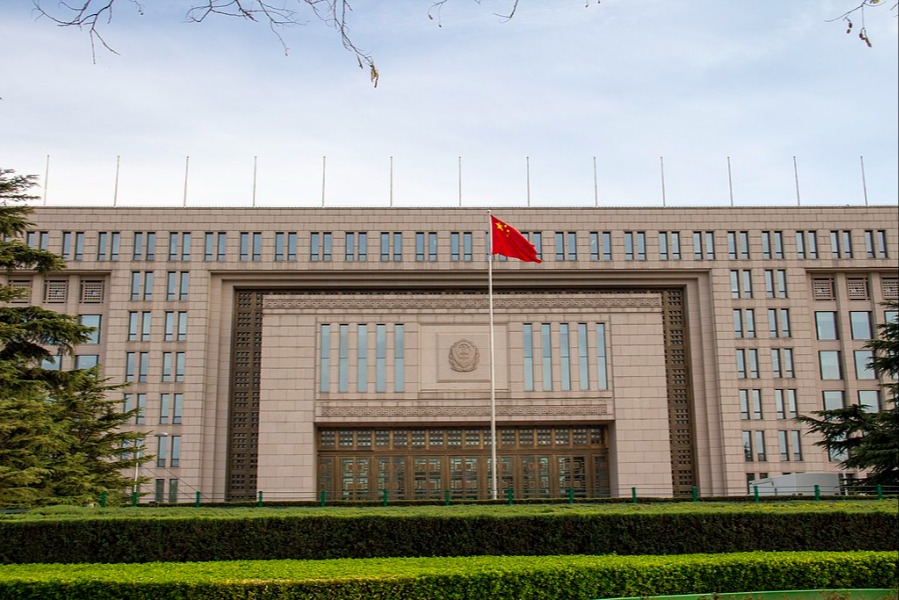AMLO’s National Guard: Mexico Still Needs Its Military to Restore Public Safety
In the months since Mexico’s president, Andrés Manuel López Obrador (often called “AMLO”), announced the creation of a “national guard” as a core component of his public security strategy, the proposal has received significant criticism.

Published by The Lawfare Institute
in Cooperation With

In the months since Mexico’s president, Andrés Manuel López Obrador (often called “AMLO”), announced the creation of a “national guard” as a core component of his public security strategy, the proposal has received significant criticism. The precise composition and structure of the guard have been fluid, but it appears the group will initially draw from Mexico’s Federal Police, Army and Navy for staffing and will, apparently, be under a civilian chain of command.
Commentators have pounced on the continued critical role that Mexico’s military would play, at least in the near-term, in attempting to restore public safety in Mexico. Jake Dizard’s recent Lawfare article captures the essence of the opposition: The military has no place in a “law enforcement” role; it is a human rights threat given past human rights abuses by the military; and Mexico’s use of the military to combat criminal groups simply has not worked. López Obrador, in Dizard’s view, is recycling a failed strategy. But these arguments fail when confronted with a stark reality: Mexico does not currently have a viable alternative to using its military.
Criticism of López Obrador’s plan is not without merit. Mexico is now more violent and, in certain places, more dangerous than when, in 2006, the Calderón Administration first stood up to the cartels, including by deploying the military. It is also true that using Mexico’s military to combat the gangs is a problematic solution; as Dizard rightly argues, soldiers are not meant to be police. Few would disagree that it would be preferable for Mexican law enforcement and prosecutors to lead the charge, with the military playing, at most, a secondary supporting role in areas like logistics, transportation and intelligence analysis.
Public security progress has been made in Mexico, albeit haltingly and not nearly to the extent necessary. In the mid- to late 2000s, Mexico neared, in the eyes of some seasoned observers, the condition of a failed state. Large swaths of territory were controlled by a handful of major organized crime groups. As the cartels competed for territory and control over smuggling routes, murder and crime were rampant. The Mexican government appeared to lack the ability to effectively exert sovereign authority throughout its national territory.
Then, as now, Mexico also lacked the necessary criminal justice institutions to counter the criminal groups effectively. The police and investigatory agencies were underfunded, undertrained and beset by corruption. Mexico lacked prosecutorial resources and the know-how to deal with the problem, and its judiciary was not designed for the task. It is little wonder that Mexico turned to its national security institutions, principally the military, to fill the void in these circumstances.
Over the ensuing years, Mexico made commendable progress in fracturing the main criminal organizations, in particular by successfully targeting a large number of cartel leaders (a so-called “kingpin strategy”). The Mexican Army and Navy took a lead role in kingpin operations, as law enforcement was generally not capable of doing so. But the Calderón administration simultaneously committed to revamping and strengthening its criminal justice institutions. In partnership with the U.S. Government and with U.S. aid under the Mérida Initiative, significant efforts were expended to train and vet police, build prosecutorial capacity and implement criminal justice reforms.
However, the consequences of the “kingpin” success against the major cartels have now materialized. The large groups have been replaced by a collection of many and much smaller organizations, which now compete for territory and control over drug smuggling and distribution, human trafficking and extortion. These smaller gangs, formed by members of the prior large organizations, know only the violence and violent tactics of the last decade. Not only is the intensity of the current violence notable, but so too is the geographic span. Violence has hit tourist areas that were previously a redline and off-limits for criminal groups.
Mexico’s criminal justice capabilities unfortunately are not at the point of being able to effectively confront the multitude criminal groups operating around the country. Dizard and other critics recognize that Mexico’s criminal justice institutions are not up to the task, as López Obrador certainly does. But if not the military to help fill the gap, then what? There is no viable short-term alternative. López Obrador is facing the reality that the military remains a critical component of Mexico’s strategy because it is the best trained and resourced enforcement option available. The military, in many situations and places, is the sole option available to confront gang violence. López Obrador is playing the hand he was dealt and using the tools available to him to pursue public order and greater security. The alternative is to regress and allow the criminal groups to retrench and grow.
Although critics, including Dizard, contend that national guard is nothing but a continuation of the last decade’s strategy, there are significant differences. The national guard will draw from both the military and from law enforcement, creating an environment in which law enforcement can learn the ways and means of intelligence, operational planning and operational execution from the military. The force also builds upon the investments made in the Federal Police, as the national guard will either absorb the Federal Police in whole or in part. And, crucially, the structure of the new force will allow it be operational immediately rather than sitting on the sidelines for the months or years it would take to train an entirely new force.
Unlike previous administrations, which siloed law enforcement and the military, López Obrador’s plan to bring together the disparate agencies creates the possibility of bridging the current, explicit reliance on active duty military to a security enterprise ultimately driven by law enforcement institutions. Melding law enforcement and the military will not be easy—the cultures are different, command tensions will arise, and the differing skill levels and training will have to be equalized. But agency growing pains can be managed through strong leadership and political support coupled with proper resources and incentives.
Controlled by civilian authorities, as is appropriate for a democracy, Mexico’s military is essential now to creating conditions of citizen security. Protecting civil and human rights should also remain a core focus of the Mexican government. The fact that abuses have occurred should not itself preclude action now with a focus to prevent them from reoccurring. López Obrador appears to be sensitive to these concerns, having already shifted from a military command to civilian command model. But if López Obrador accepts the proposal passed by Mexico’s lower house of Congress, which would substantially eliminate the military’s role in the new security force as critics have urged, his national guard may go the sorry way of President Peña Nieto’s ill-fated gendarmerie. Peña Nieto, like López Obrador, campaigned on restoring public safety and proposed a new paramilitary police force—a gendarmerie—as the cornerstone of that strategy. From that grand vision, however, only a small Federal Police unit with a narrow mandate emerged. The unit ultimately had little, if any, effect on the security situation in Mexico.
Dizard is right that the military is not a long-term solution for Mexico’s organized crime problem; to solve the crisis, the country must build capable law enforcement institutions and a reliable criminal justice system trusted by the population and capable of curbing criminal impunity and corruption. The military is, however, a necessary component of Mexico’s strategy in the short term. Integrated with law enforcement and subject to civilian control, the national guard is an innovation that can foster the conditions necessary for civilian institutions to develop and mature. The responsibility now rests on Mexico’s leaders in government, business and civil society to continue the work of building the country’s legal institutions—so that, at an appropriate point downstream, the military can return to the barracks once the rule of law has genuinely taken root in Mexico.



